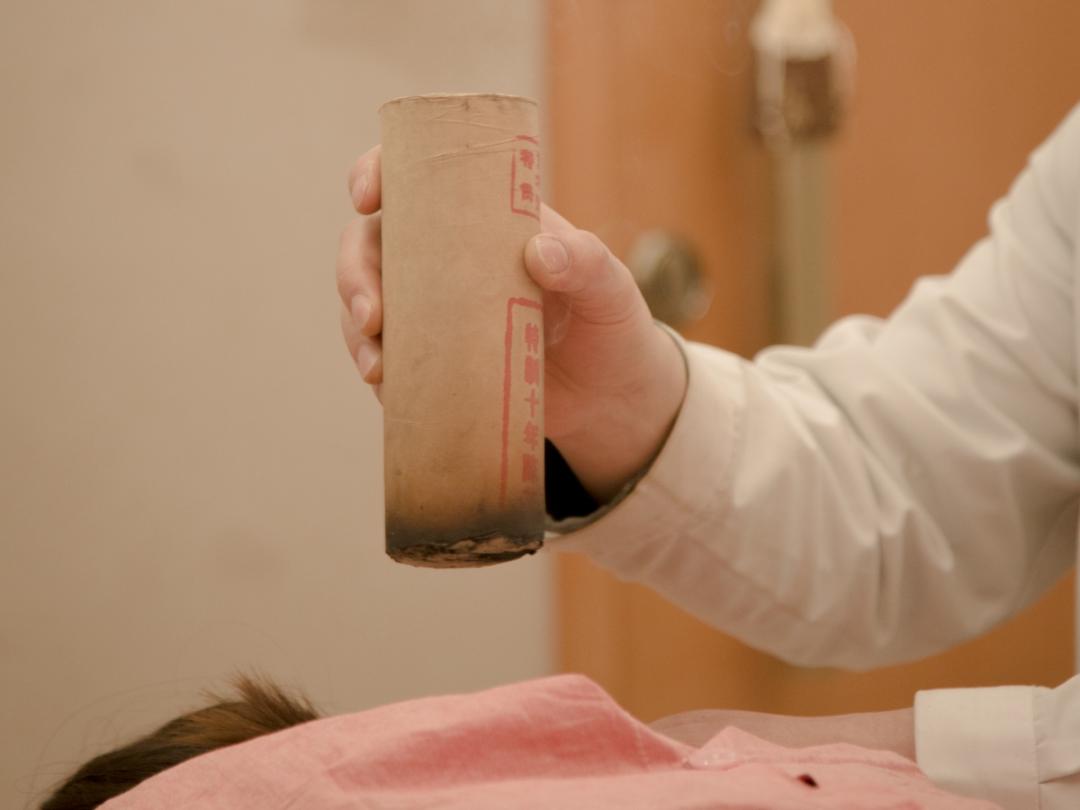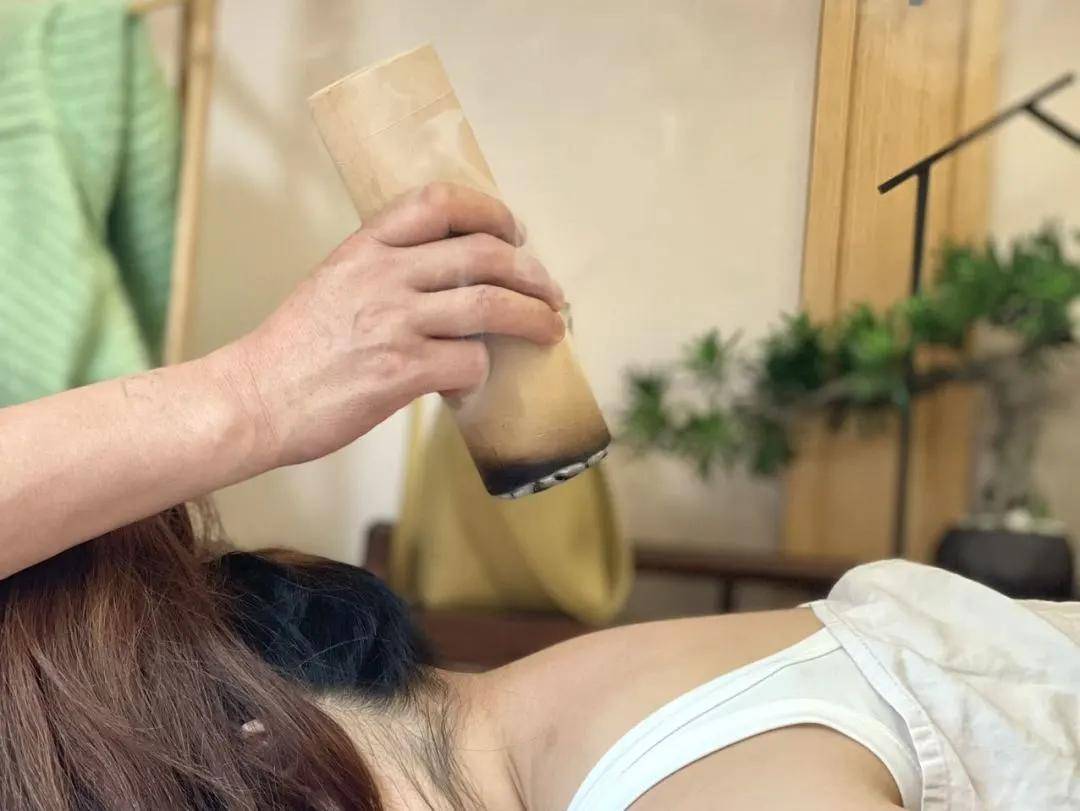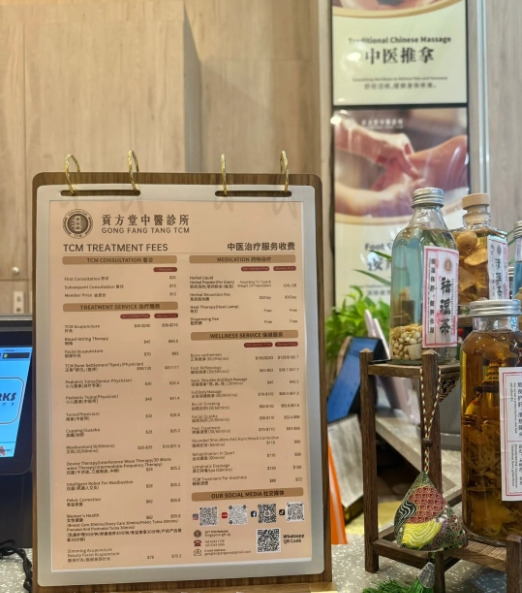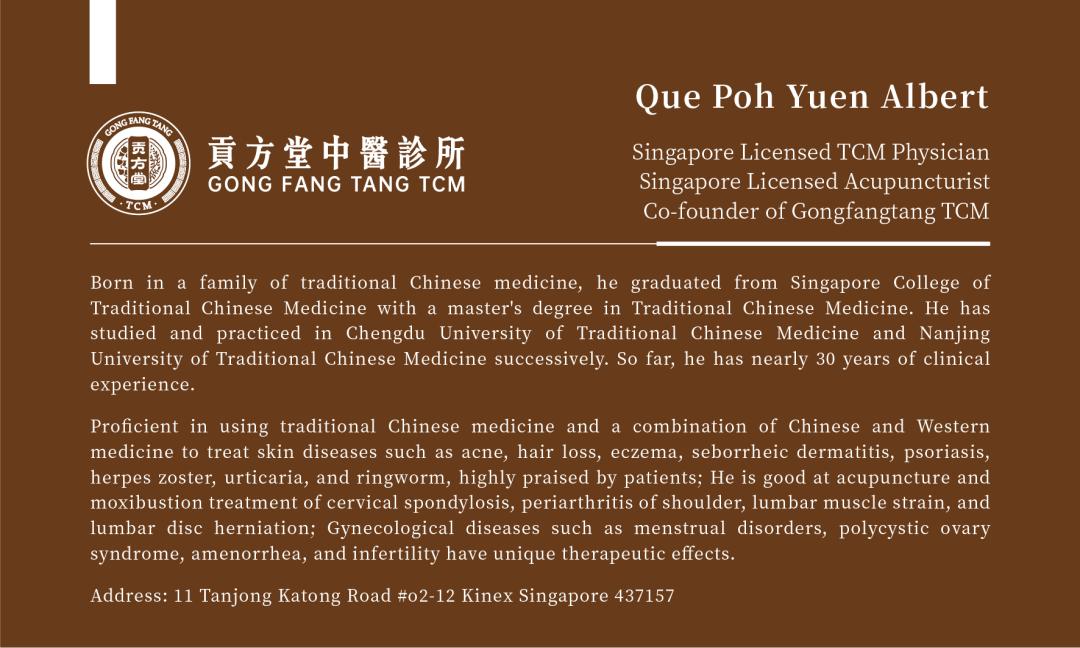Many people are both curious and cautious about moxibustion—a millennia-old Traditional Chinese Medicine (TCM) therapy. Dr. Qiu Baorun from Gongfangtang TCM Clinic in Singapore explains that moxibustion uses heat generated by burning mugwort (Artemisia argyi) to stimulate specific acupoints or body regions. This therapy aims to warm the meridians, dispel cold-dampness, and replenish Qi and blood, making it particularly suitable for modern individuals with yang deficiency and poor Qi-blood circulation.

Today, we’ll detail Gongfangtang’s standardized moxibustion protocols:
Constitution Assessment: During the first visit, the practitioner reviews the patient’s health history to rule out contraindications (e.g., high fever, bleeding disorders, skin lesions).
Precision Localization: Medical marker pens are used to mark acupoints with ≤0.5cm accuracy.
Temperature Control: Primarily uses “suspended moxibustion” (holding the moxa stick 2–3cm above the skin), adjusting height based on patient feedback to prevent burns.
Post-Moxibustion Care: Drink warm water afterward; avoid cold drafts and water contact for 2 hours. Early sleep is advised to consolidate yang energy.
Special Notes:
Mild redness around the treated area is normal, but small blisters require immediate professional attention.
Avoid moxibustion when overly hungry/full. Pregnant women must strictly avoid lumbosacral and abdominal acupoints.

Conditions Suitable for Moxibustion:
Based on Gongfangtang’s clinical experience, moxibustion often benefits:
Subhealth: Chronic fatigue, cold extremities, frequent colds, light sleep.
Pain Management: Neck/shoulder/back/leg pain or joint stiffness caused by wind-cold-dampness.
Gynecological Care: Uterine coldness, dysmenorrhea, irregular menstruation, postpartum Qi-blood deficiency.
Spleen-Stomach Issues: Chronic gastritis, indigestion, diarrhea with loose stools.

Regarding “DIY moxibustion” devices, Dr. Qiu warns: *“Moxibustion may seem simple, but it requires precise heat control and acupoint selection. For example, lower back pain caused by cold-dampness benefits from intense moxibustion at Shenshu (BL23), while damp-heat types may worsen with improper use.”* He advises seeking professional TCM clinics—especially for advanced techniques like salt-partitioned moxibustion or scarring moxibustion—to ensure safety and efficacy.
